Abstract
1. During copper-limited growth of Candida utilis in continuous culture on a non-fermentable carbon and energy source there is a selective pressure favouring the emergence of variants that are less dependent on copper. 2. We describe the properties of such a variant that by-passes cytochrome oxidase (EC 1.9.3.1) by utilizing an alternative oxidase communicating with the respiratory chain at about the level of cytochrome b. 3. Both direct studies of isolated mitochondria and calculations based on growth parameters showed that only one of the normal three phosphorylation sites was active. This site was localized between NADH and the cytochromes. 4. Growth of the variant with copper-supplemented media resulted in the return of cytochrome oxidase but not the loss of the alternative oxidase. 5. The alternative oxidase is inhibited by substituted benzhydroxamic acids. 6. Submitochondrial particles from the variant did not exhibit any novel electron-paramagnetic-resonance-spectroscopy features at about g=2.0 either at 80°K or 12°K.
Full text
PDF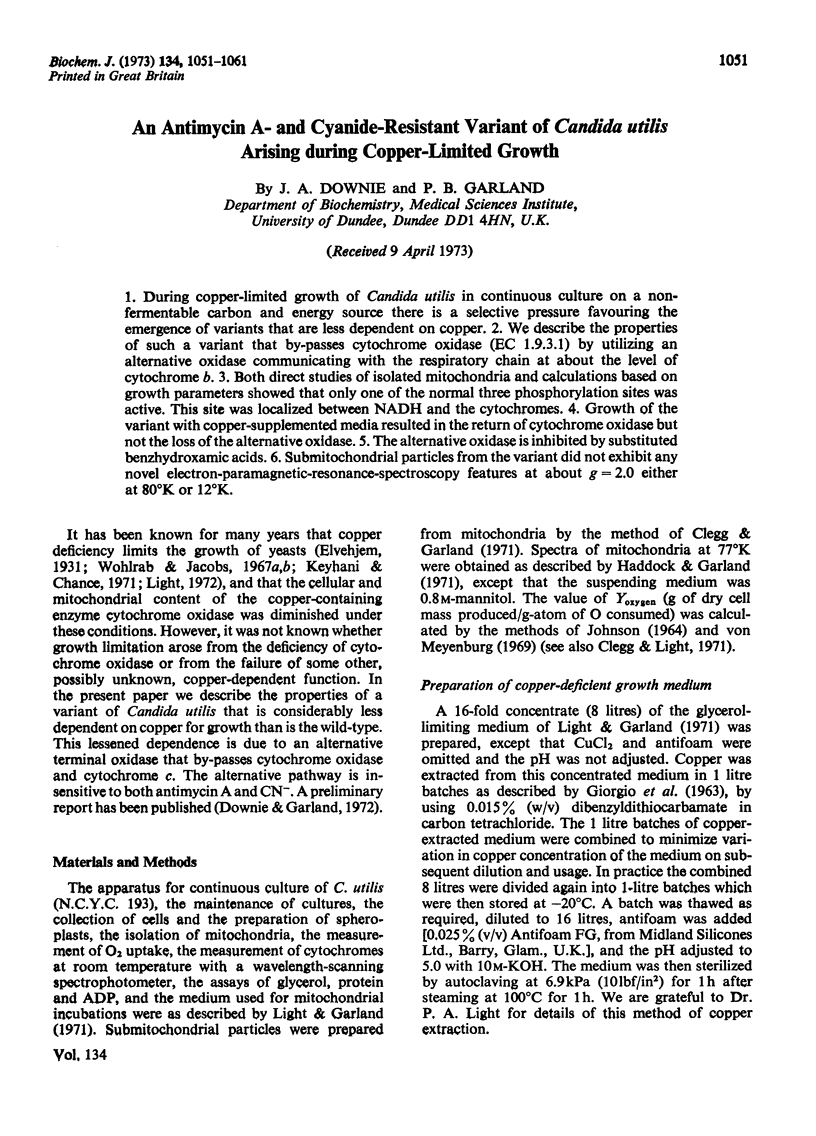
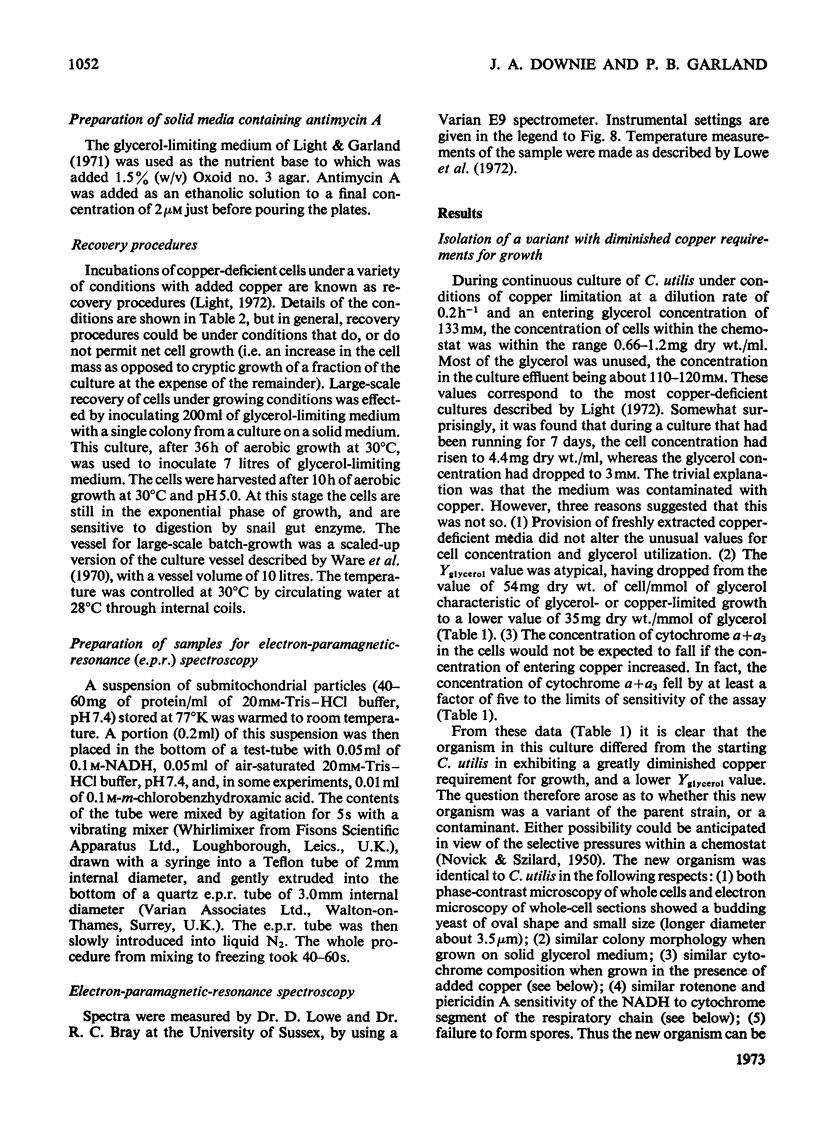
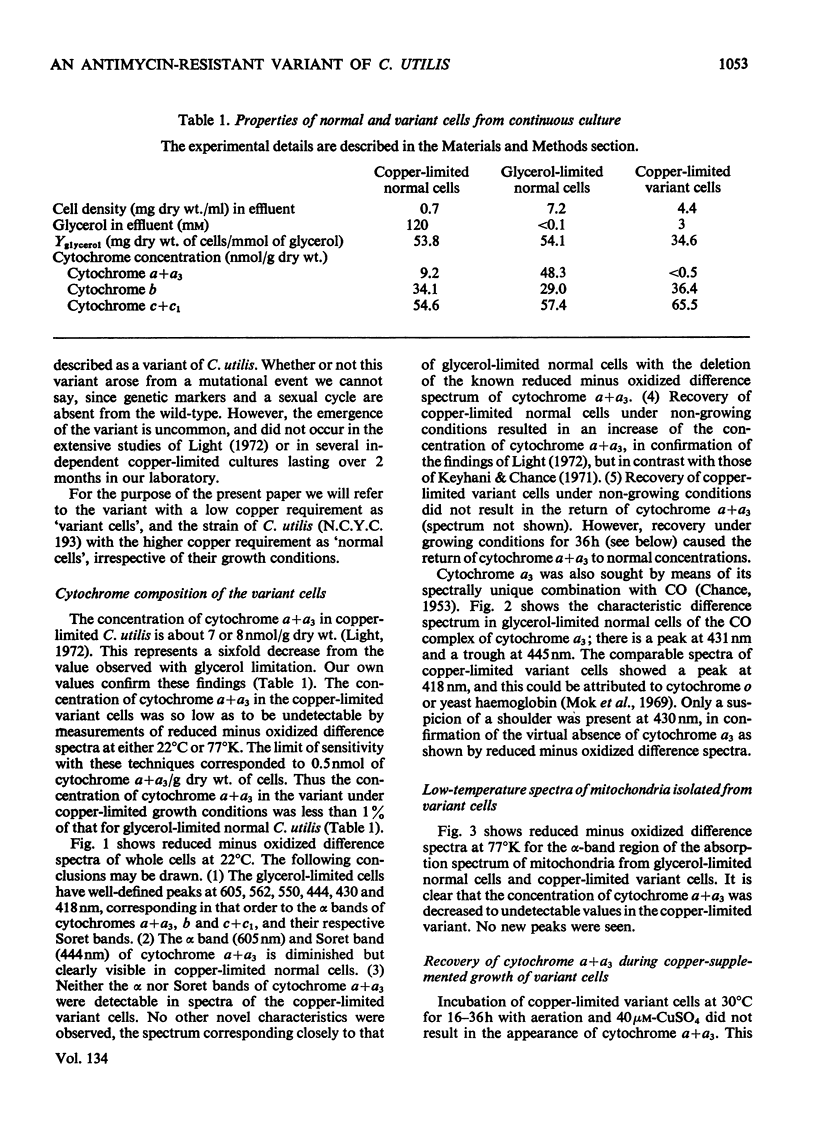
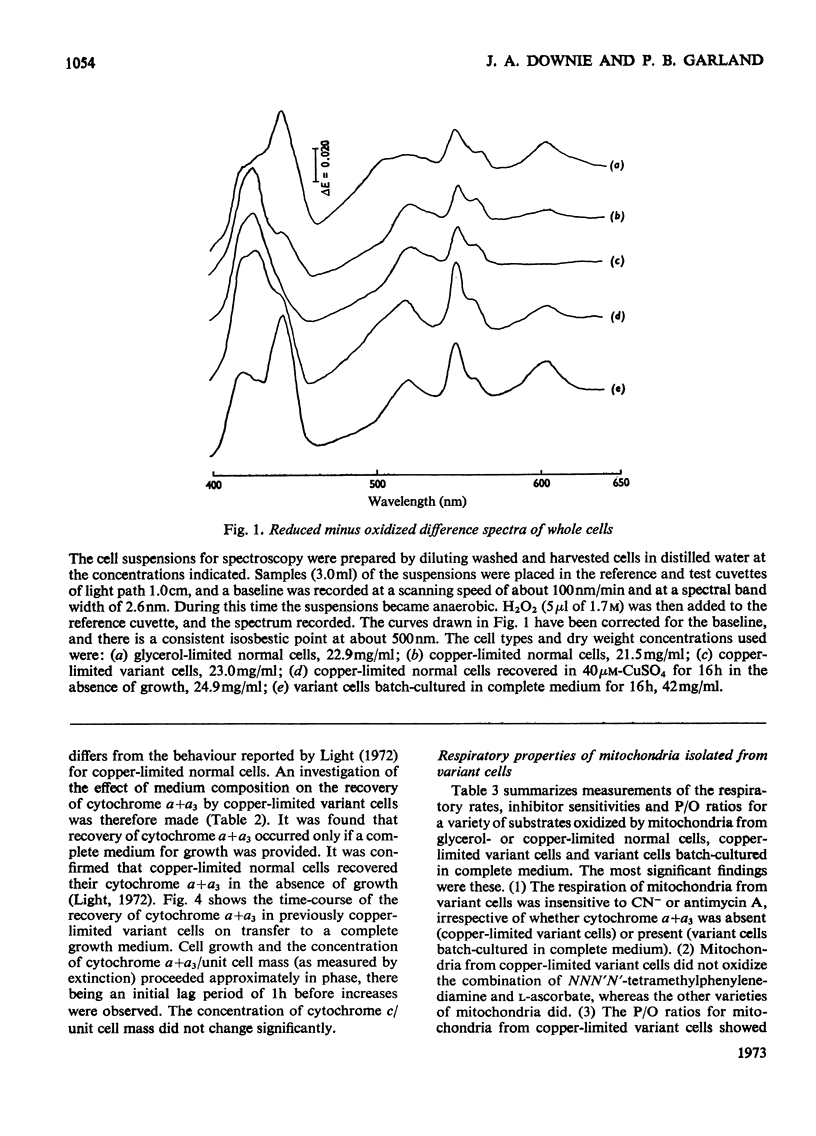
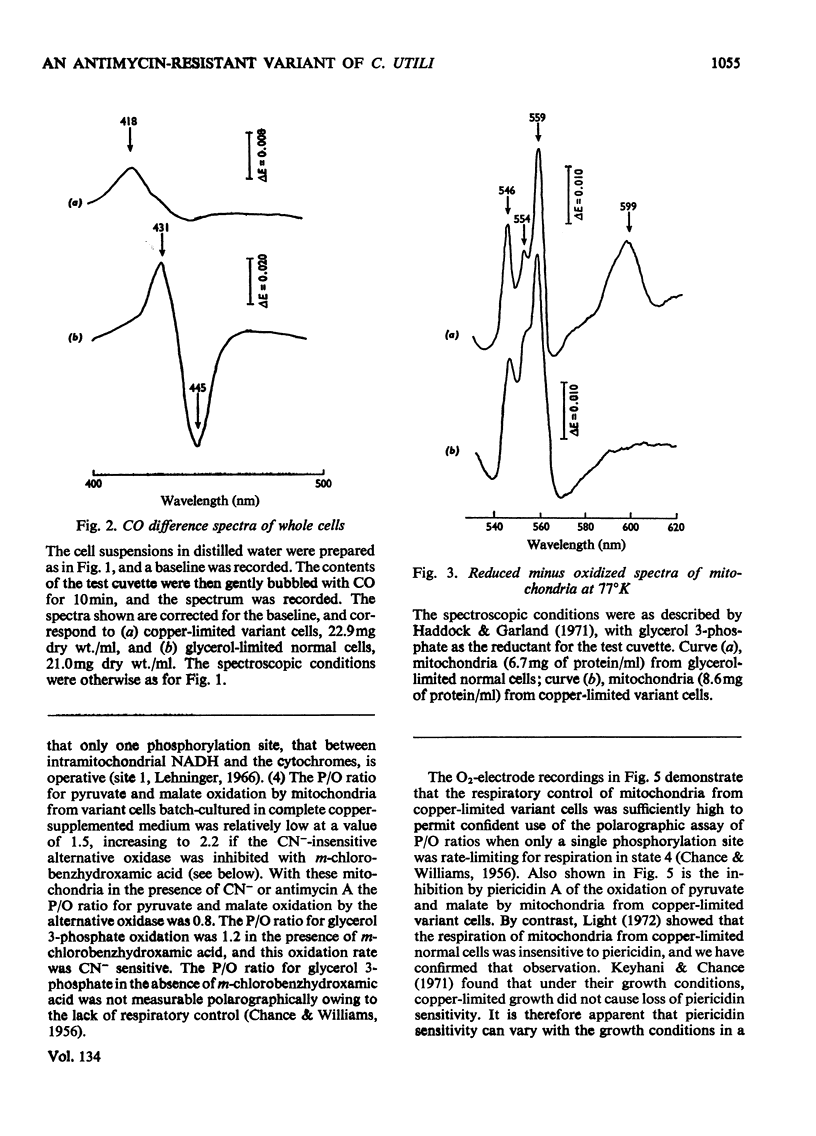
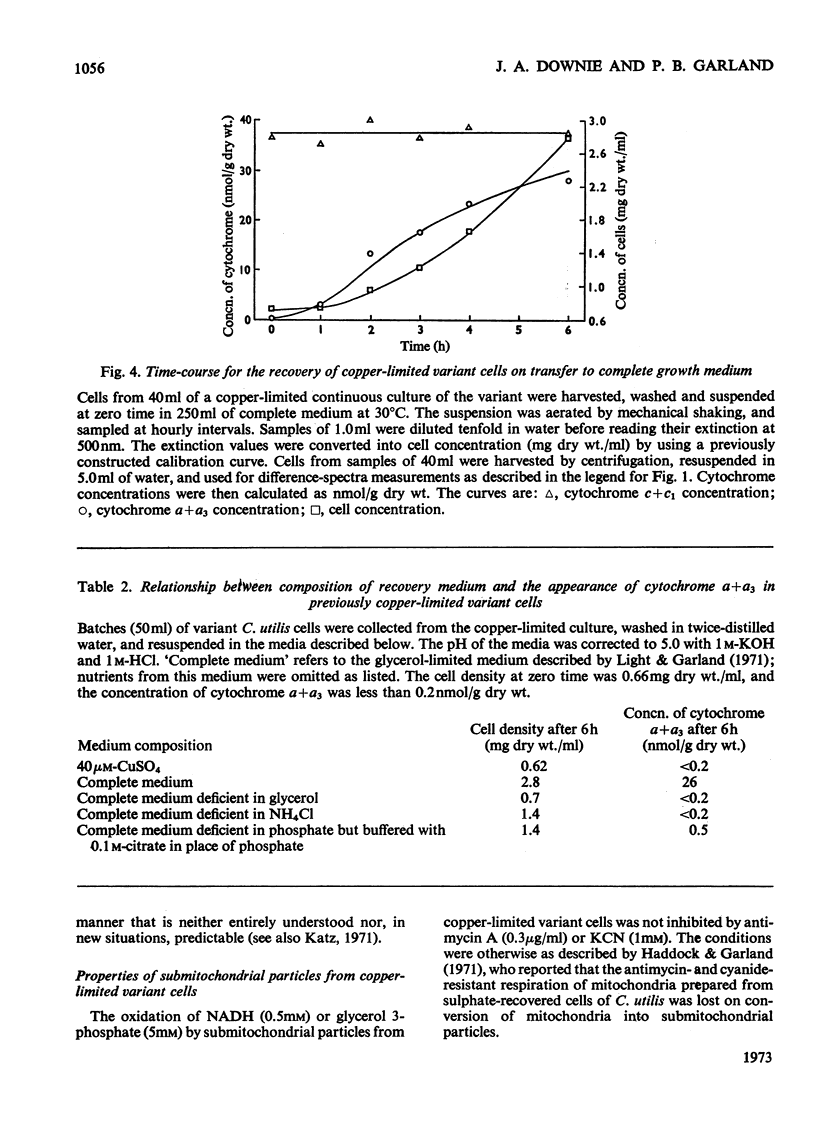
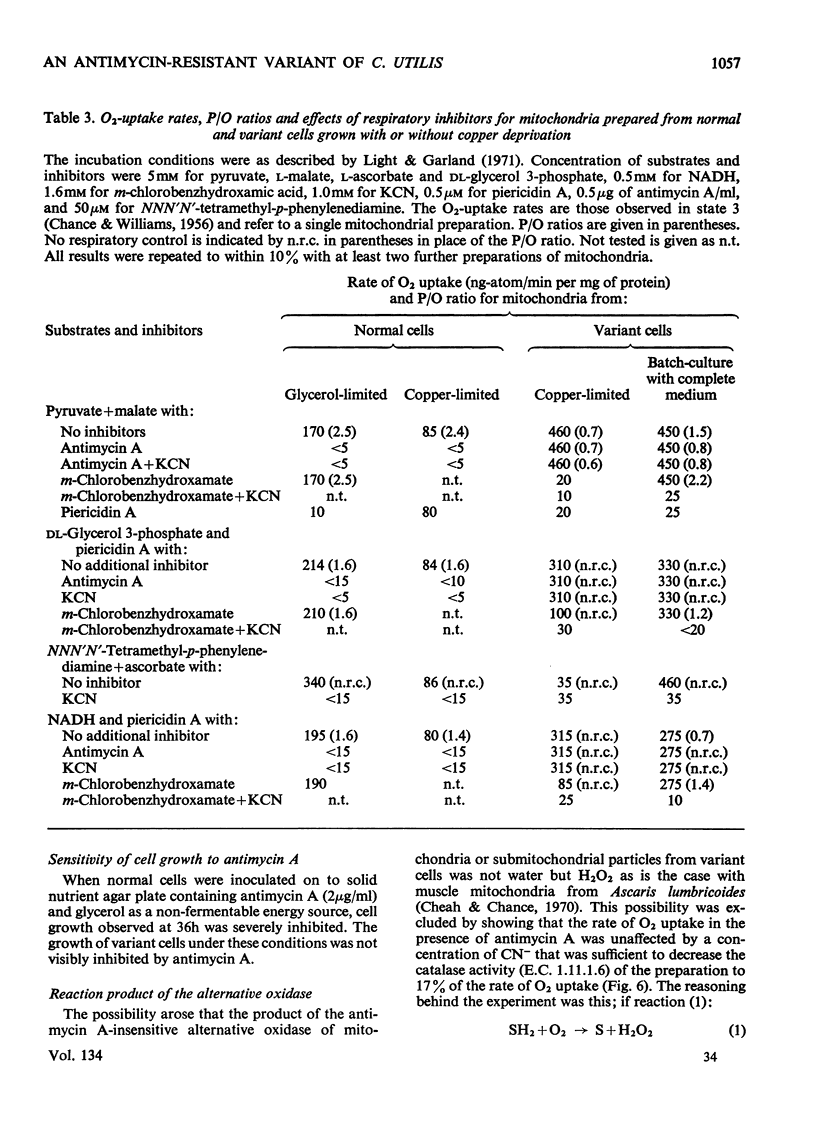
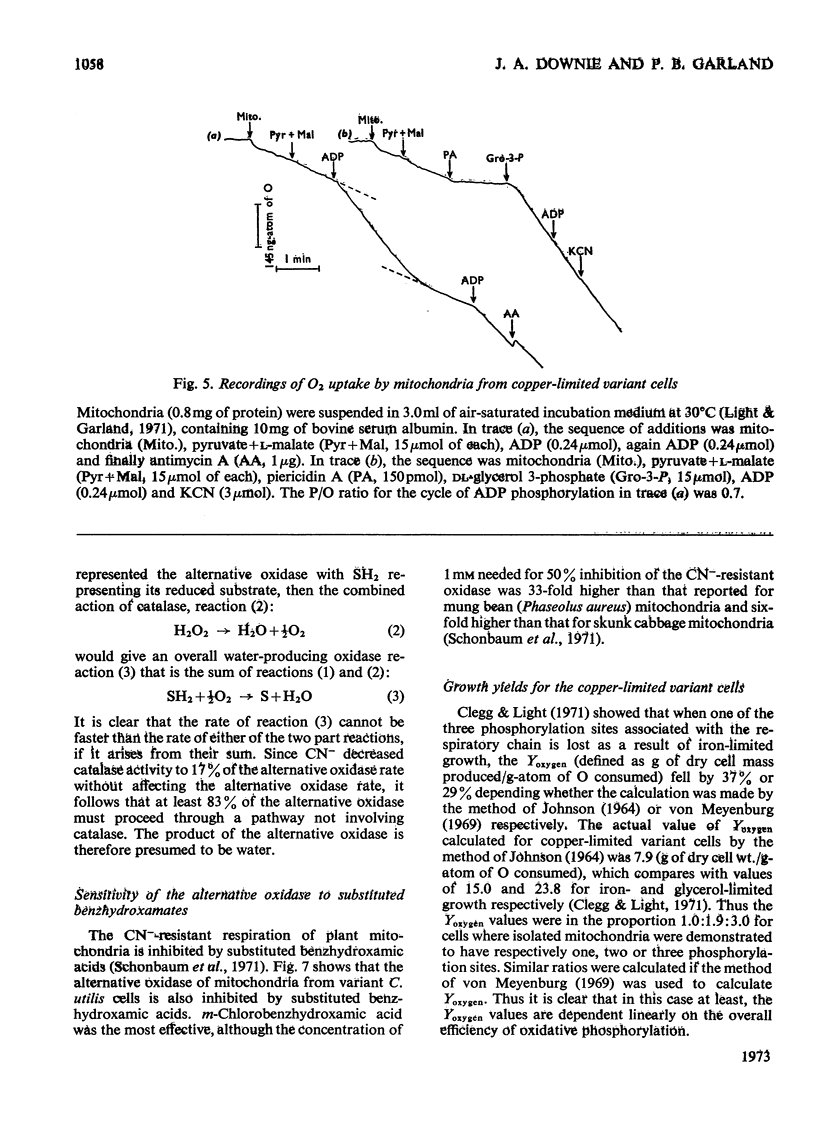
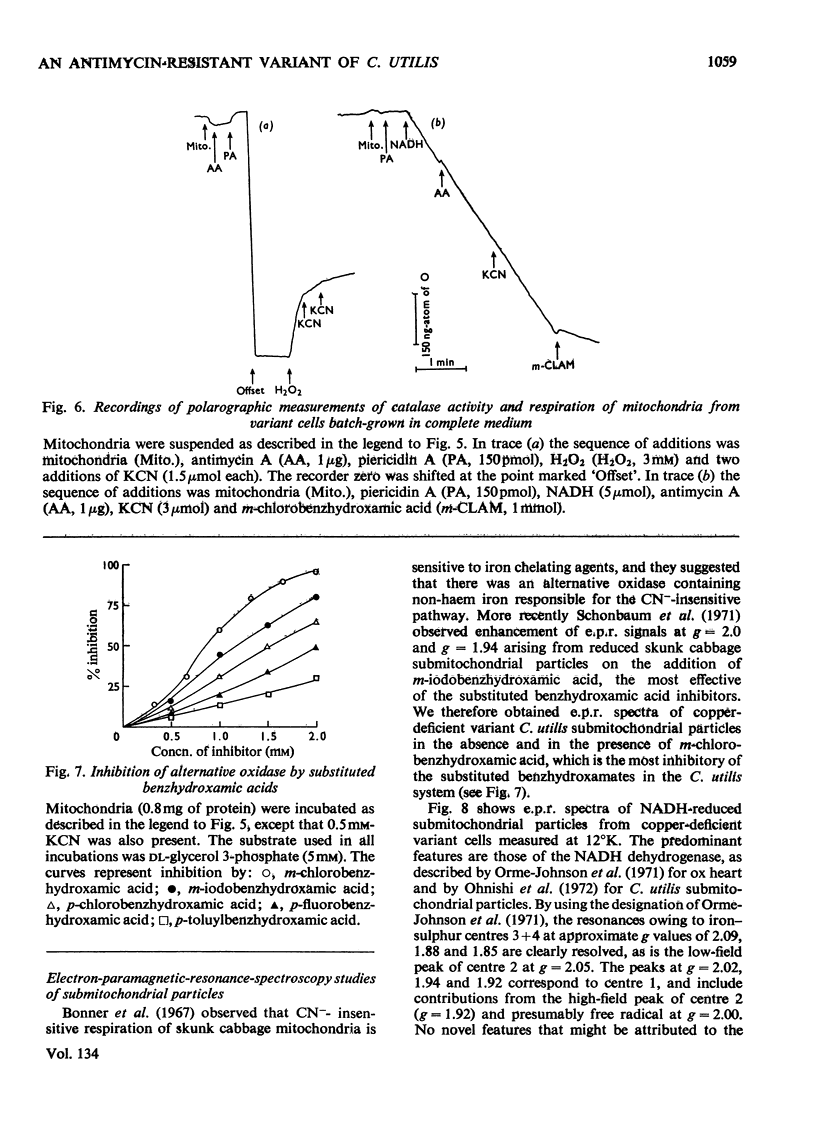
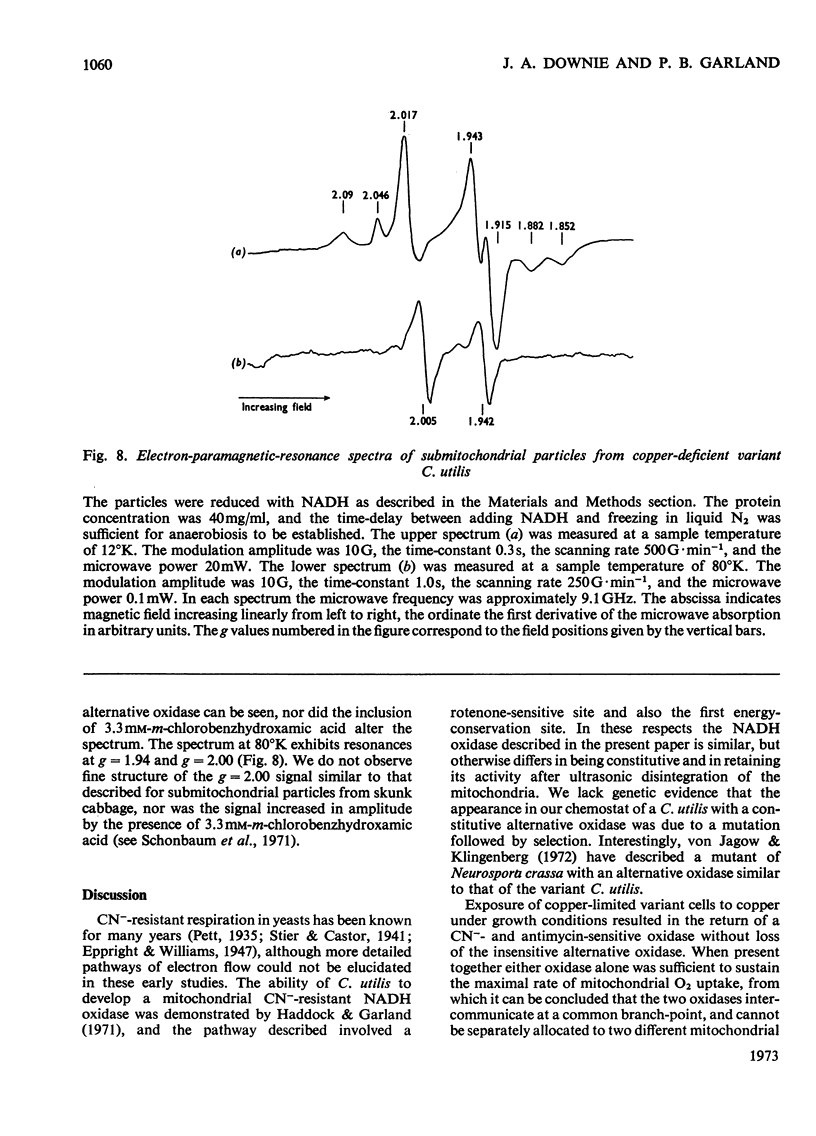
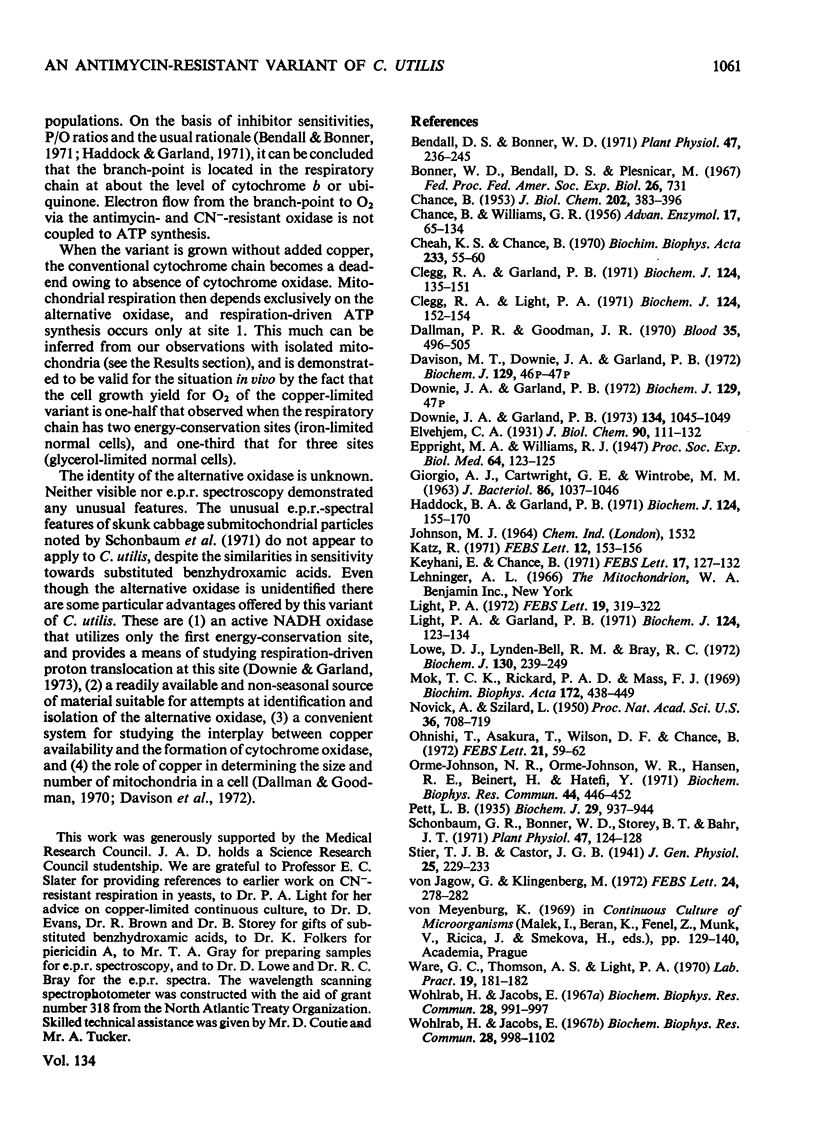
Selected References
These references are in PubMed. This may not be the complete list of references from this article.
- Bendall D. S., Bonner W. D. Cyanide-insensitive Respiration in Plant Mitochondria. Plant Physiol. 1971 Feb;47(2):236–245. doi: 10.1104/pp.47.2.236. [DOI] [PMC free article] [PubMed] [Google Scholar]
- CHANCE B. The carbon monoxide compounds of the cytochrome oxidases. I. Difference spectra. J Biol Chem. 1953 May;202(1):383–396. [PubMed] [Google Scholar]
- CHANCE B., WILLIAMS G. R. The respiratory chain and oxidative phosphorylation. Adv Enzymol Relat Subj Biochem. 1956;17:65–134. doi: 10.1002/9780470122624.ch2. [DOI] [PubMed] [Google Scholar]
- Cheah K. S., Chance B. The oxidase systems of Ascaris-muscle mitochondria. Biochim Biophys Acta. 1970 Nov 3;223(1):55–60. doi: 10.1016/0005-2728(70)90131-3. [DOI] [PubMed] [Google Scholar]
- Clegg R. A., Garland P. B. Non-haem iron and the dissociation of piericidin A sensitivity from site 1 energy conservation in mitochondria from Torulopsis utilis. Biochem J. 1971 Aug;124(1):135–151. doi: 10.1042/bj1240135. [DOI] [PMC free article] [PubMed] [Google Scholar]
- Clegg R. A., Light P. A. Growth yields of Torulopsis utilis grown in continuous culture with glycerol or iron as the growth-limiting nutrient. Biochem J. 1971 Aug;124(1):152–154. doi: 10.1042/bj1240152. [DOI] [PMC free article] [PubMed] [Google Scholar]
- Dallman P. R., Goodman J. R. Enlargement of mitochondrial compartment in iron and copper deficiency. Blood. 1970 Apr;35(4):496–505. [PubMed] [Google Scholar]
- Downie J. A., Garland P. B. Respiration-driven proton translocation by yeast mitochondria with differing efficiencies of oxidative phosphorylation. Biochem J. 1973 Aug;134(4):1045–1049. doi: 10.1042/bj1341045. [DOI] [PMC free article] [PubMed] [Google Scholar]
- GIORGIO A. J., CARTWRIGHT G. E., WINTROBE M. M. PREPARATION OF A COPPER-DEFICIENT MEDIUM FOR YEAST GROWTH. J Bacteriol. 1963 Nov;86:1037–1040. doi: 10.1128/jb.86.5.1037-1040.1963. [DOI] [PMC free article] [PubMed] [Google Scholar]
- Haddock B. A., Garland P. B. Effect of sulphate-limited growth on mitochondrial electron transfer and energy conservation between reduced nicotinamide-adenine dinucleotide and the cytochromes in Torulopsis utilis. Biochem J. 1971 Aug;124(1):155–170. doi: 10.1042/bj1240155. [DOI] [PMC free article] [PubMed] [Google Scholar]
- Katz R. Growth phase and rotenone sensitivity in Torulopsis utilis: Difference between exponential and stationary phase. FEBS Lett. 1971 Jan 12;12(3):153–156. doi: 10.1016/0014-5793(71)80056-x. [DOI] [PubMed] [Google Scholar]
- Keyhani Ezzatollah, Chance Britton. Cytochrome biosynthesis under copper-limited conditions in Candida utilis. FEBS Lett. 1971 Sep 15;17(1):127–132. doi: 10.1016/0014-5793(71)80580-x. [DOI] [PubMed] [Google Scholar]
- Light P. A., Garland P. B. A comparison of mitochondria from Torulopsis utilis grown in continuous culture with glycerol, iron, ammonium, magnesium or phosphate as the growth-limiting nutrient. Biochem J. 1971 Aug;124(1):123–134. doi: 10.1042/bj1240123. [DOI] [PMC free article] [PubMed] [Google Scholar]
- Light P. A. Mitochondrial effects of copper-limited growth of Torulopsis utilis. FEBS Lett. 1972 Jan 1;19(4):319–322. doi: 10.1016/0014-5793(72)80070-x. [DOI] [PubMed] [Google Scholar]
- Lowe D. J., Lynden-Bell R. M., Bray R. C. Spin-spin interaction between molybdenum and one of the iron-sulphur systems of xanthine oxidase and its relevance to the enzymic mechanism. Biochem J. 1972 Nov;130(1):239–249. doi: 10.1042/bj1300239. [DOI] [PMC free article] [PubMed] [Google Scholar]
- Mok T. C., Rickard P. A., Moss F. J. The carbon monoxide-reactive haemoproteins of yeast. Biochim Biophys Acta. 1969 Apr 8;172(3):438–449. doi: 10.1016/0005-2728(69)90140-6. [DOI] [PubMed] [Google Scholar]
- NOVICK A., SZILARD L. Experiments with the Chemostat on spontaneous mutations of bacteria. Proc Natl Acad Sci U S A. 1950 Dec;36(12):708–719. doi: 10.1073/pnas.36.12.708. [DOI] [PMC free article] [PubMed] [Google Scholar]
- Ohnishi T., Asakura T., Wilson D. F., Chance B. The oxidation-reduction potentials of iron-sulfur centers in the site I region of the respiratory chain in C. utilis submitochondrial particles. FEBS Lett. 1972 Mar;21(1):59–62. doi: 10.1016/0014-5793(72)80163-7. [DOI] [PubMed] [Google Scholar]
- Orme-Johnson N. R., Orme-Johnson W. H., Hansen R. E., Beinert H., Hatefi Y. EPR detectable electron acceptors in submitochondrial particles from beef heart with special reference to the iron-sulfur components of DPNH-ubiquinone reductase. Biochem Biophys Res Commun. 1971 Jul 16;44(2):446–452. doi: 10.1016/0006-291x(71)90621-8. [DOI] [PubMed] [Google Scholar]
- Pett L. B. Lactoflavin in micro-organisms. Biochem J. 1935 Apr;29(4):937–944. doi: 10.1042/bj0290937. [DOI] [PMC free article] [PubMed] [Google Scholar]
- Schonbaum G. R., Bonner W. D., Jr, Storey B. T., Bahr J. T. Specific inhibition of the cyanide-insensitive respiratory pathway in plant mitochondria by hydroxamic acids. Plant Physiol. 1971 Jan;47(1):124–128. doi: 10.1104/pp.47.1.124. [DOI] [PMC free article] [PubMed] [Google Scholar]
- Von Jagow G., Klingenberg M. Close correlation between antimycin titer and cytochrome b(T) content in mitochondria of chloramphenicol treated Neurospora crassa. FEBS Lett. 1972 Aug 15;24(3):278–282. doi: 10.1016/0014-5793(72)80372-7. [DOI] [PubMed] [Google Scholar]
- Ware G. C., Thompson A. S., Light P. A. A non-metallic chemostat for micro-organisms requiring controlled trace metal concentrations. Lab Pract. 1970 Feb;19(2):181–182. [PubMed] [Google Scholar]
- Wohlrab H., Jacobs E. E. Copper-deficient mitochondria. Electron transport and oxidative phosphorylation. Biochem Biophys Res Commun. 1967 Sep 27;28(6):998–1002. doi: 10.1016/0006-291x(67)90079-4. [DOI] [PubMed] [Google Scholar]
- Wohlrab H., Jacobs E. E. Copper-deficient mitochondria. Spectrophotometric determination of cytochromes. Biochem Biophys Res Commun. 1967 Sep 27;28(6):991–997. doi: 10.1016/0006-291x(67)90078-2. [DOI] [PubMed] [Google Scholar]


